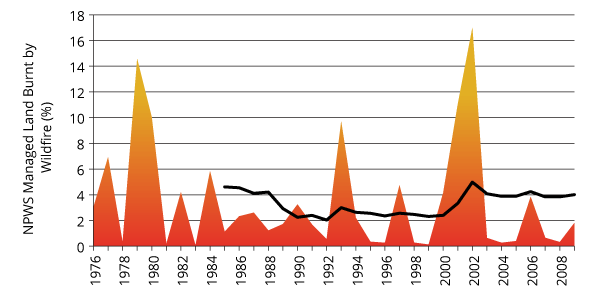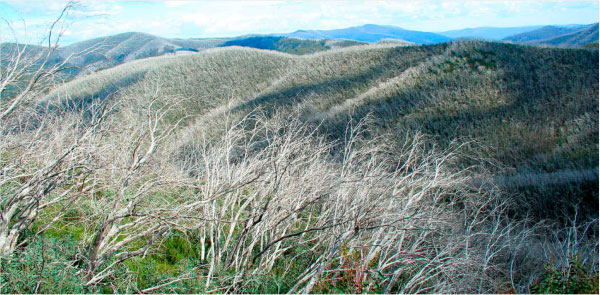Campaign: Timber in the Carbon Economy
The role of timber in the carbon economy needs to be recognised alongside its role as a resource. Expanding into new carbon economy markets and attracting long term investment is critical to the future of the timber industry.
The world’s climate and its forests are intrinsically linked. Forests are an important component of the global carbon cycle, playing multiple roles in addressing climate change.
This has been recognised by the International Panel on Climate Change in its 4th Assessment Report:
“In the long term, a sustainable forest management strategy aimed at maintaining or increasing forest carbon stocks, while producing an annual sustained yield of timber, fibre or energy from the forest, will generate the largest sustained mitigation benefit.”
The world’s forests and soils store more than one trillion tonnes of carbon, twice as much carbon as is in the atmosphere. Forests have the potential to absorb about 10-20 per cent of the total global emissions projected for the first half of the 21st century.
In the 21st century, these roles must be integrated within the emerging carbon economy. In Australia, this is not currently the case.
Timber is much more than a commodity. New South Wales’ forests and wood product industries contribute to long term carbon emissions abatement in numerous ways.
New South Wales’ forests and wood product industries contribute to long term carbon emissions abatement in numerous ways, including:
- capturing and storing atmospheric carbon in growing forests
- protecting forest carbon stores from damaging wildfires
- providing long-term storage of carbon in durable wood products
- providing a renewable substitute for much more emissions-intensive building materials, such as steel, aluminium and concrete
- replacing carbon-intensive fossil fuel sources such as coal, oil and gas with bioenergy from wood waste, forest thinnings and harvesting residues.
Many timber products also undergo a significant phase of recycling, further extending the carbon storage.
Industry and government must work together to ensure that policy recognises and supports the role that timber and forest products can play in climate change mitigation and energy substitution.
The forest estate of New South Wales can and should be managed to deliver a full range of public policy outcomes. A wider perspective is key.
Using Timber to reduce carbon emissions
Forests & Carbon Sequestration
Powered by sunlight in a process called photosynthesis, growing trees ‘sequester’ carbon dioxide from the atmosphere and store the carbon. About half the dry weight of a tree is carbon.
In fact, for every dry tonne of timber produced, 1.8 tonnes of carbon dioxide is taken from the atmosphere. This carbon remains ‘locked up’ for the life of the wood, even when it is used for building products or furniture, helping to offset global greenhouse gas emissions.
The rate and extent to which trees sequester carbon is influenced by many factors including species, site quality, climate and forest management. Trees sequester carbon more rapidly during their peak growth period between 10 – 30 years of age.
If a tree is not harvested, its carbon sequestration rate slows after it reaches maturity, which is about 40 years for softwood and 80 years of age for hardwood. Beyond this point, the rate of sequestration flattens as carbon captured from new growth is offset by the release of carbon from parts of the tree which begin to decay and or are shed.
Sustainably harvesting trees in their early mature phase ensures that a forest’s carbon sequestration rate is kept at an optimal level. Under a sustainable harvesting regime, forests have the capacity to store more carbon over the longer term than if the forests are left unmanaged.
In addition, unmanaged forests are more susceptible to wildfires, which release large quantities of greenhouse gases back into the atmosphere. According to the Australian Institute of Criminology, a major bushfire event such as the 2003 fires in south-eastern Australia increased national carbon emissions by an estimated 180 million tonnes.
On average around four per cent of the forests in NSW National Parks and Reserves are burnt by wildfire each year. Each time these events occur, carbon stored in the forests is released back to the atmosphere (refer Figure 1 and Figure 2)
Figure 1– Percentage of NSW Parks and Reserves burnt by wildfire
*Note – black line is 10 year rolling annual average. Data source: NPWS Annual reports
Figure 2 – Tree death caused by wildfire
In addition to bushfires, forest carbon storage can be impacted by a broad range of disturbance events such as pests and diseases, drought and storm damage.
The long term storage of carbon in wood products is often a more secure way of locking up the carbon than trying to protect it within unmanaged forests.
Timber: Long Term Carbon Storage
So harvested timber products provide stable carbon storage over the long term. Timber products have a long service life, with the half-life of solid and composite wood products being up to 30 years (when used in furniture) and up to 100 years (when used in homes).
A timber framed home stores 7.5 tonnes of carbon, while a steel framed house emits 2.9 tonnes of carbon. New building technologies are now making it possible to replace greenhouse gas intensive concrete, steel and aluminium with timber construction in multi-storey.
At the end of their service life, most wood products in Australia are disposed of in landfill. The rate of decay in landfill is much slower than previously thought, with more than 95 per cent of the carbon in wood remaining stored after being buried for 30 years in landfill.
A Renewable, Low Energy Alternative
The carbon benefits of wood also include the lower energy requirements needed to manufacture them, by comparison with alternate materials. This advantage is particularly important for the construction industry.
The processes required to produce metal (such as steel or aluminium) or plastics, which are derived from petrochemicals, create significant amounts of greenhouse gas emissions.
In contrast, it takes far less energy to produce timber for use as a building material.
It generally requires around 19 times more energy to make a product from steel rather than from kiln- dried hardwood; 45 times more to make a plastic product; and 85 times more energy to make a comparable aluminium product.
Remembering that timber products also act as a long-term storage for carbon, the comparative advantages of timber products are significant.
Sometimes these benefits go unrecognised, because energy rating schemes and environmental assessments are not based on full life cycle assessments of the products they compare.
Bioenergy & the Product Substitution Effect
Currently, the main source of electricity in New South Wales is coal, which contains large amounts of carbon which is released into the air when it is burnt to make electricity.
In contrast, the timber and forest products industry offers sustainably produced, renewable biomass products for electricity, heat production and biofuels.
Residues are produced at each stage of timber and wood product processing, with 40-60 per cent of log biomass ‘lost’ to residues during processing to green rough sawn boards.
Known as the ‘product substitution effect’, the use of residues and wood waste to generate energy permanently eliminates atmospheric emissions that would otherwise have resulted from the use of fossil fuels. Net carbon dioxide emissions from the generation of electricity using biomass are typically only 5-10 per cent of those from fossil fuel based electricity generation.
Compared to fossil fuels, which transfer carbon from geologic reserves to the atmosphere, wood based biomass fuels are considered ‘carbon neutral’ when the forests from which the fuels were taken remain as forested areas. Forest biomass can also be used for renewable heat and liquid fuels, which add value beyond just electricity generation.
The timber and forest products industry markets its woody waste and residues, with firewood, landscaping and animal husbandry applications being the most notable end uses. Yet the native timber industry continues to produce much more wood waste than it can sell, even as the opportunities to be gained from the use of bioenergy remain largely untapped.
Australia lags behind many developed economies in the use of bioenergy, which represents just 0.8 per cent of Australia’s energy production. This is at odds with Australia having one of the highest areas of forest per capita of the developed nations. In fact with the right incentives, the forest industry has the potential to sustainably produce around seven per cent of Australia’s renewable energy target by 2020.
Incentives for the use of forest biomass in energy generation currently fall well short of those which have been provided to the wind and solar industry sectors. This imbalance is preventing the bioenergy sector from realising its potential.
Sustainable Procurement
Activities that lead to an increase in greenhouse gas emissions include the burning of fossil fuels, increased mining and the clearing of land for agriculture and housing. In a sustainably managed forest, logging is balanced by regrowth. If done sustainably, logging does not lead to deforestation.
In what is often described as ‘sustainable procurement’, organisations are looking beyond price, quality, availability and functionality to consider other factors in their timber procurement decisions, including environmental and social aspects. Sustainable procurement can help maintain a company’s social licence to operate and ultimately help secure sustainable supplies of timber.
It’s a virtuous cycle: buying more sustainable wood products will lead to the planting of more trees which will absorb more CO2 from the atmosphere.
A Place in the Carbon Economy
There is strong and growing domestic demand for Australian timber. However, current predictions indicate that Australia will remain a net importer of forest products. This is despite the fact that annual timber growth in Australia exceeds the current harvest each year.
As one of the world’s highest carbon emitters Australia also has a strong and growing need to develop markets for carbon abatement and renewable energy sources like wood waste.
Critical to the future of the timber industry is expanding into these new carbon economy markets and attracting long term investment. Yet timber is effectively excluded from the Carbon Farming Initiative and Renewable Energy Target scheme
that drive Australia’s carbon economy.
There are exciting opportunities ahead, but current policy settings and high sovereign risk are preventing the industry from reaching its potential. The role of government is critical.
Timber NSW calls on the Federal and New South Wales governments to work with the industry to develop policy settings which provide a place for timber in Australia’s carbon economy.
Timber NSW seeks:
- Solid Policy Framework A solid, supportive policy framework that recognises the broader role of the timber industry in the 21st century.
- Reduced Sovereign Risk Cogent, stable regulation as a platform from which to attract ongoing industry investment and create jobs.
- Level Playing Field Recognition of timber in the carbon economy alongside solar, wind and other renewable energy sources.


